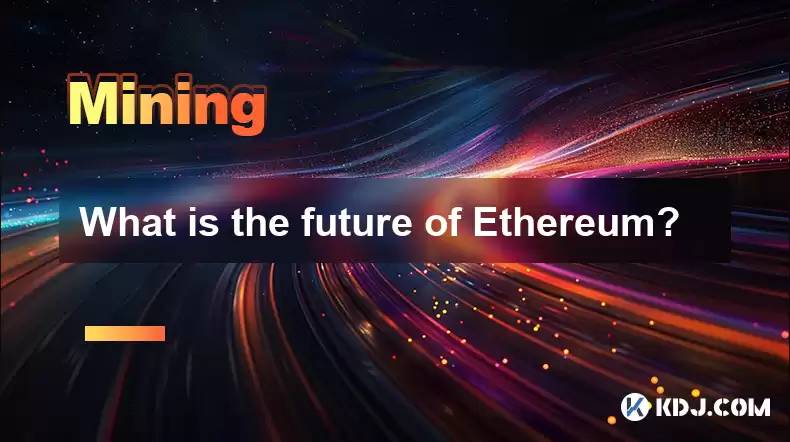-
 Bitcoin
Bitcoin $116400
-0.36% -
 Ethereum
Ethereum $4033
3.40% -
 XRP
XRP $3.302
-1.26% -
 Tether USDt
Tether USDt $1.000
-0.02% -
 BNB
BNB $796.1
1.67% -
 Solana
Solana $177.8
1.89% -
 USDC
USDC $0.9999
0.00% -
 Dogecoin
Dogecoin $0.2314
4.09% -
 TRON
TRON $0.3381
0.14% -
 Cardano
Cardano $0.7989
1.22% -
 Stellar
Stellar $0.4496
-1.84% -
 Chainlink
Chainlink $20.42
9.42% -
 Hyperliquid
Hyperliquid $41.17
0.88% -
 Sui
Sui $3.914
3.77% -
 Bitcoin Cash
Bitcoin Cash $584.7
1.52% -
 Hedera
Hedera $0.2632
-0.54% -
 Avalanche
Avalanche $24.09
3.40% -
 Ethena USDe
Ethena USDe $1.001
-0.02% -
 Litecoin
Litecoin $123.2
1.33% -
 Toncoin
Toncoin $3.318
-0.04% -
 UNUS SED LEO
UNUS SED LEO $8.984
-0.05% -
 Shiba Inu
Shiba Inu $0.00001323
2.85% -
 Uniswap
Uniswap $10.90
4.41% -
 Polkadot
Polkadot $3.999
3.34% -
 Dai
Dai $1.000
0.01% -
 Cronos
Cronos $0.1630
9.64% -
 Bitget Token
Bitget Token $4.484
0.82% -
 Monero
Monero $272.4
2.44% -
 Pepe
Pepe $0.00001173
6.03% -
 Aave
Aave $290.8
2.88%
What is the future of Ethereum?
Ethereum 2.0's transition to proof-of-stake enhances energy efficiency, increases security, and promotes fairer reward distribution.
Feb 24, 2025 at 08:18 pm

Key Points:
- Ethereum 2.0 Upgrade
- Layer-2 Solutions and Sidechains
- Proof-of-Stake Consensus
- Enterprise Adoption
- Decentralized Applications (dApps)
Article:
1. Ethereum 2.0 Upgrade
Ethereum 2.0, also known as Serenity, is a major upgrade to the Ethereum network aimed at addressing its scalability and security issues. Unveiled in 2019, Ethereum 2.0 will introduce significant changes:
- Proof-of-Stake Consensus: Replace the energy-intensive proof-of-work consensus mechanism with proof-of-stake, where validators stake their ETH to secure the network and earn rewards.
- Sharding: Divide the Ethereum network into 64 "shards," each processing a subset of transactions in parallel. This significantly increases transaction throughput.
- Beacon Chain: Introduce the Beacon Chain, a separate blockchain that manages staking and coordinates the shards.
The Ethereum 2.0 upgrade is expected to be completed in multiple phases, with the final release anticipated to occur in the coming years.
2. Layer-2 Solutions and Sidechains
Layer-2 solutions and sidechains are technologies that enhance the scalability of Ethereum without modifying the core protocol. Here's how they operate:
- Layer-2 Solutions: Operate on top of the Ethereum mainnet, offloading transactions to them. Examples include Optimistic Rollups and zk-Rollups, which significantly reduce gas fees and transaction times.
- Sidechains: Separate blockchains that run in parallel with Ethereum. They interact with Ethereum through bridges, allowing for faster transactions and lower costs.
3. Proof-of-Stake Consensus
Ethereum 2.0's transition to a proof-of-stake consensus mechanism has several advantages:
- Energy Efficiency: Proof-of-stake consumes significantly less electricity than proof-of-work, making Ethereum more environmentally friendly.
- Increased Security: The process of staking ETH for validation makes it more difficult for malicious actors to attack the network.
- Fairer Reward Distribution: Stakers receive rewards proportional to their stake, ensuring a fair distribution of incentives.
4. Enterprise Adoption
Ethereum is gaining traction in the enterprise space, where its decentralized features offer potential solutions in areas such as supply chain management, financial services, and healthcare:
- Smart Contracts: Ethereum's smart contracts allow for automated execution of agreements, reducing costs and increasing transparency.
- Decentralized Autonomous Organizations (DAOs): DAOs leverage Ethereum to operate as self-governing entities.
- Permissioned Blockchains: Enterprises can create private, permissioned blockchains based on Ethereum, offering the benefits of decentralization without jeopardizing data privacy.
5. Decentralized Applications (dApps)
Ethereum is a hub for decentralized applications (dApps) that leverage the blockchain's unique features. These dApps include:
- DeFi Services: Financial applications like decentralized exchanges, lending protocols, and yield farming platforms.
- NFTs: Non-fungible tokens that represent unique digital assets like artwork, collectibles, and virtual land.
- Gaming: Play-to-earn games that allow players to earn cryptocurrency for playing and contributing to the game's ecosystem.
FAQs:
What are the long-term price projections for ETH?
- Long-term price predictions for ETH vary widely, with some analysts expecting a significant increase in value as Ethereum 2.0 matures and adoption expands.
Is Ethereum a good investment?
- Ethereum's long-term potential as an investment depends on factors such as the success of Ethereum 2.0, the growth of the DeFi and dApp ecosystem, and adoption by enterprises and institutional investors.
When will Ethereum 2.0 be released?
- Ethereum 2.0 is expected to be fully released in the coming years, although specific timelines are subject to change. The upgrade is being implemented in phases, with various milestones already achieved.
What are the differences between Layer-1 and Layer-2 solutions?
- Layer-1 solutions modify the core Ethereum protocol to enhance scalability, while Layer-2 solutions operate on top of the mainnet, offloading transactions to increase throughput.
Disclaimer:info@kdj.com
The information provided is not trading advice. kdj.com does not assume any responsibility for any investments made based on the information provided in this article. Cryptocurrencies are highly volatile and it is highly recommended that you invest with caution after thorough research!
If you believe that the content used on this website infringes your copyright, please contact us immediately (info@kdj.com) and we will delete it promptly.
- Decentralized Data: Taking the Driver's Seat in the Data Economy
- 2025-08-09 14:30:11
- Bitcoin vs. Gold: The Store-of-Value Showdown in the Digital Age
- 2025-08-09 14:30:11
- BlockDAG, Stellar, and Crypto Adoption: Navigating the Hype
- 2025-08-09 14:50:12
- Litecoin Price Surge: Riding the Wave of Institutional Interest and ETF Hopes
- 2025-08-09 14:50:12
- Chainlink's Wild Ride: Whales Are Still Loading Up on LINK!
- 2025-08-09 15:10:11
- Ruvi AI: Solana's New Challenger Dominating Token Sales with AI Innovation
- 2025-08-09 14:55:15
Related knowledge

What is "proof-of-work" and how does it relate to mining?
Aug 07,2025 at 02:03pm
Understanding the Concept of Proof-of-WorkProof-of-work (PoW) is a consensus mechanism used in blockchain networks to validate transactions and secure...

What are the differences between mining on Windows vs. Linux?
Aug 06,2025 at 11:29pm
Overview of Cryptocurrency Mining PlatformsCryptocurrency mining involves using computational power to solve complex cryptographic puzzles and validat...

How to use an old computer for cryptocurrency mining?
Aug 07,2025 at 12:42pm
Understanding the Feasibility of Using an Old Computer for MiningUsing an old computer for cryptocurrency mining may seem outdated, but it is still te...

Can you mine cryptocurrency using solar power?
Aug 07,2025 at 12:00am
Understanding the Basics of Cryptocurrency MiningCryptocurrency mining involves validating transactions on a blockchain network by solving complex cry...

How to monitor your mining rig's temperature and stability?
Aug 09,2025 at 09:43am
Understanding the Importance of Temperature Monitoring in Mining RigsMaintaining optimal temperature levels in a mining rig is essential for long-term...

How to build a mining rig inside a PC case?
Aug 06,2025 at 11:01pm
Understanding the Basics of a Mining Rig in a PC CaseBuilding a mining rig inside a PC case involves transforming a standard computer chassis into a d...

What is "proof-of-work" and how does it relate to mining?
Aug 07,2025 at 02:03pm
Understanding the Concept of Proof-of-WorkProof-of-work (PoW) is a consensus mechanism used in blockchain networks to validate transactions and secure...

What are the differences between mining on Windows vs. Linux?
Aug 06,2025 at 11:29pm
Overview of Cryptocurrency Mining PlatformsCryptocurrency mining involves using computational power to solve complex cryptographic puzzles and validat...

How to use an old computer for cryptocurrency mining?
Aug 07,2025 at 12:42pm
Understanding the Feasibility of Using an Old Computer for MiningUsing an old computer for cryptocurrency mining may seem outdated, but it is still te...

Can you mine cryptocurrency using solar power?
Aug 07,2025 at 12:00am
Understanding the Basics of Cryptocurrency MiningCryptocurrency mining involves validating transactions on a blockchain network by solving complex cry...

How to monitor your mining rig's temperature and stability?
Aug 09,2025 at 09:43am
Understanding the Importance of Temperature Monitoring in Mining RigsMaintaining optimal temperature levels in a mining rig is essential for long-term...

How to build a mining rig inside a PC case?
Aug 06,2025 at 11:01pm
Understanding the Basics of a Mining Rig in a PC CaseBuilding a mining rig inside a PC case involves transforming a standard computer chassis into a d...
See all articles

























































































